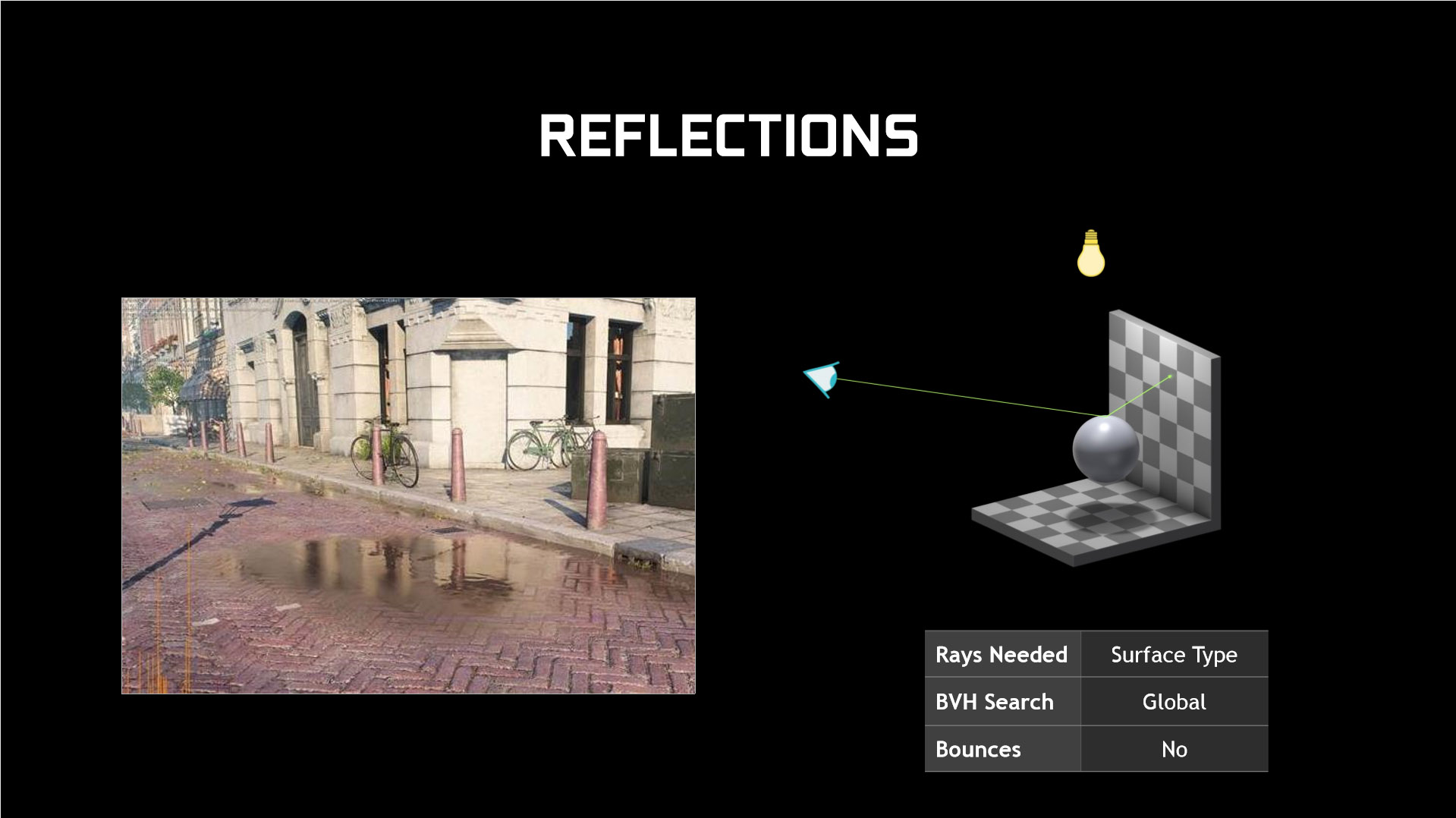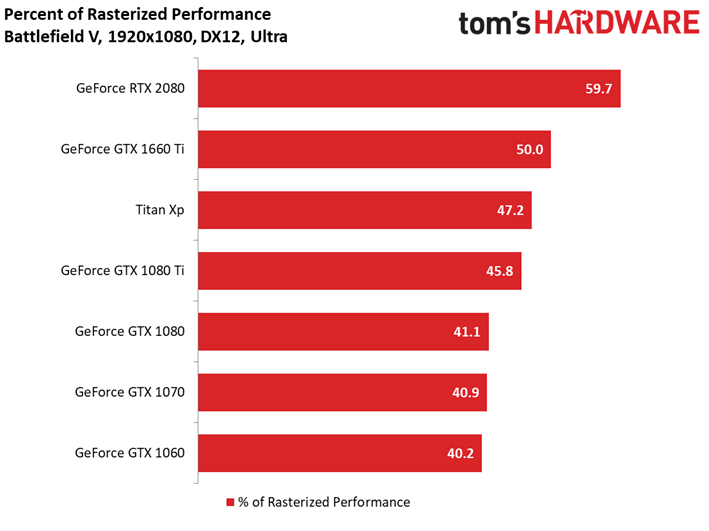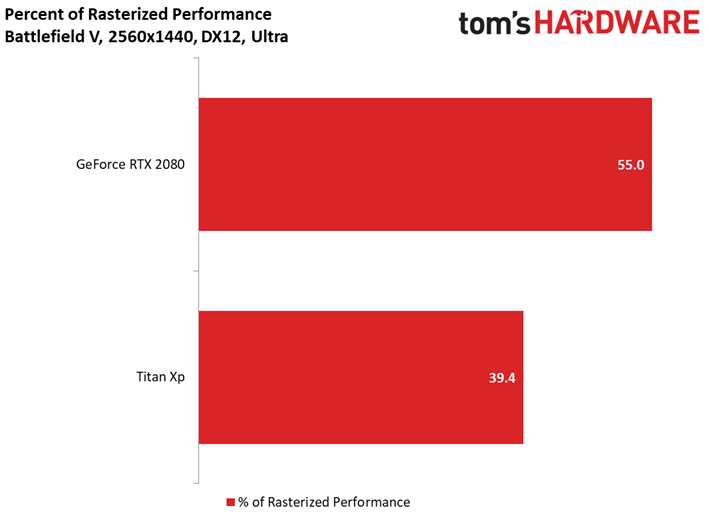Ray Tracing On Nvidia’s Pascal Architecture, Benchmarked
Battlefield V: Ray-Traced Reflections
At no point during the unveiling of Nvidia’s Turing graphics architecture did the company hint that it’d arm previous-gen Pascal-based cards with support for real-time ray tracing. In fact, the decision to break away from 10 years of GeForce GTX branding seemed to reinforce the idea that new GeForce RTX graphics cards would enjoy feature exclusivity.
Of course, we knew it was technically possible for Nvidia to support DirectX Raytracing’s fallback layer, which allowed developers to experiment with ray tracing through compute shaders before hardware acceleration was available. But the performance implications of turning ray tracing on made us question whether the extra driver work would yield fruitful results…
…unless the idea was to show enthusiasts how much of a difference Turing’s fixed-function RT cores really make. In that context, enabling DirectX Raytracing on Pascal does seem like a shrewd business decision. Battlefield V, Shadow of the Tomb Raider, and Metro Exodus all support real-time ray tracing in different ways. The Reflections, Justice, and Atomic Heart tech demos offer their own combinations of ray tracing techniques, too. And Nvidia knows there’s no better way to get gamers excited about the technology than to let them experience it. If Pascal-based cards aren’t fast enough for fluid performance, so be it. All the more reason to upgrade.
In some cases, though, high-end cards like the Titan Xp and GeForce GTX 1080 Ti are fast enough to make ray tracing accessible in Battlefield V and, to a lesser extent, Shadow of the Tomb Raider. On the other hand, Metro Exodus serves as an example of how debilitating ray-traced global illumination can be to an architecture lacking hardware acceleration.
During GDC, we covered Nvidia’s GeForce GTX DXR-capable driver announcement. Then, we went into more depth on the various ray tracing techniques used in today’s games and tech demos. Now it’s time to get that driver installed and run some benchmarks.
How We Tested Nvidia’s GeForce GTX Driver with DXR Support
Although our main graphics test bench employs an Intel Core i7-7700K CPU, we didn’t want host processing to bottleneck these taxing graphics workloads. So, we moved testing over to a Core i7-8086K-based machine with six Hyper-Threaded cores on a Gigabyte Z370 Aorus Ultra Gaming motherboard. The processor is complemented by one half of a Corsair CMK128GX4M8A2400OC14 kit, giving our platform 64GB of DDR4-2400. A Crucial MX200 SSD hosts our Windows 10 operating system, while Intel’s 1.6TB DC P3700 accommodates our game library.
Since Nvidia cuts support for DXR off at the GeForce GTX 1060 6GB, that’s where we started building our test pool. To it, we added GeForce GTX 1070, 1080, 1080 Ti, and Titan Xp from the Pascal generation. Turing is represented by GeForce RTX 2080 and GeForce GTX 1660 Ti, the former of which is laden with fixed-function RT cores and the latter of which is completely devoid of them.
Get Tom's Hardware's best news and in-depth reviews, straight to your inbox.
Battlefield V: Ray-Traced Reflections
To quote Nvidia’s explanation of DICE’s ray tracing implementation in Battlefield V:
“The Frostbite engine uses a variety of rendering techniques to create various visual effects. A few techniques, including mesh scattering and GPU particles, aren’t yet accelerated by the Battlefield V implementation of DXR, but in many situations the visual output of those techniques is present in the framebuffer. When rendering ray-traced reflections, Battlefield V is also sampling the framebuffer (similar to how SSR works), and where necessary blending those samples with the ray-traced reflections to ensure reasonably accurate reflections can be seen most of the time, across all visual effects. This is DICE’s variable rate ray tracing system. The variable rate ray tracing system helps free up rays and processing power that can be used to enhance quality elsewhere in the scene. Variable rate ray tracing makes best use of available ray budgets, but it actually wasn’t a factor in the performance improvements that came with the Chapter 1: Overture update.”
Based on our testing, Battlefield V’s variable rate ray tracing system is less detrimental to the Pascal architecture’s performance than Metro Exodus’ ray-traced global illumination effects or Shadow of the Tomb Raider’s ray-traced shadows. Before we present those results, though, let’s start with a comparison of Pascal and Turing with DXR turned off and the game’s quality preset at Ultra.
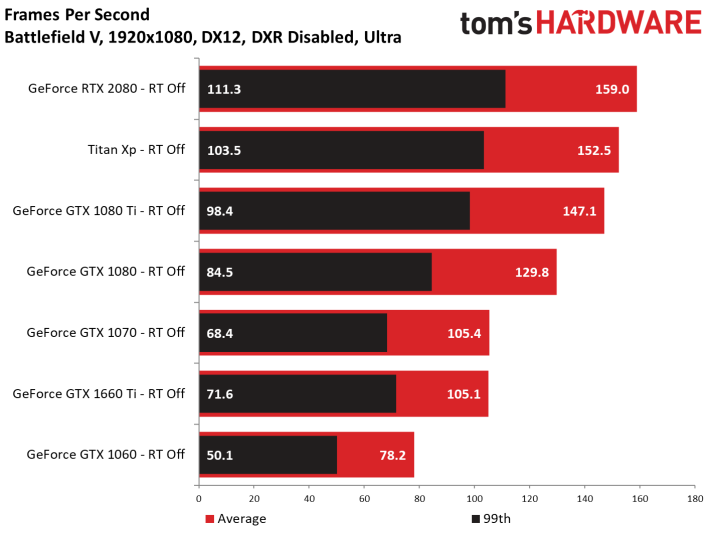
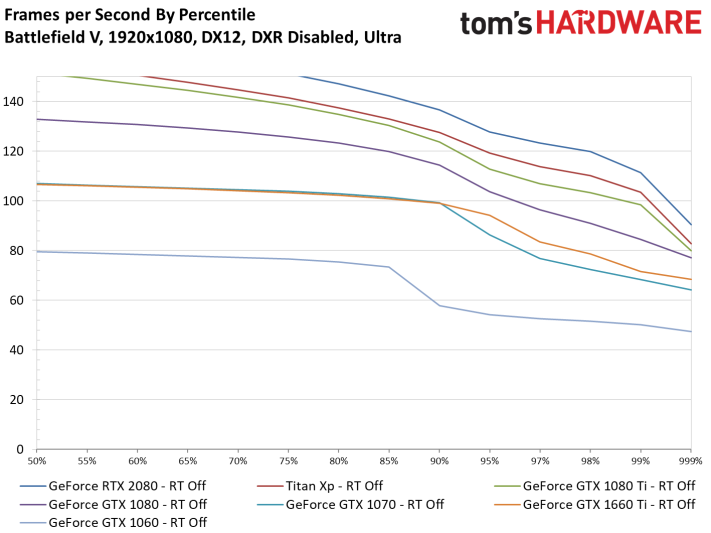
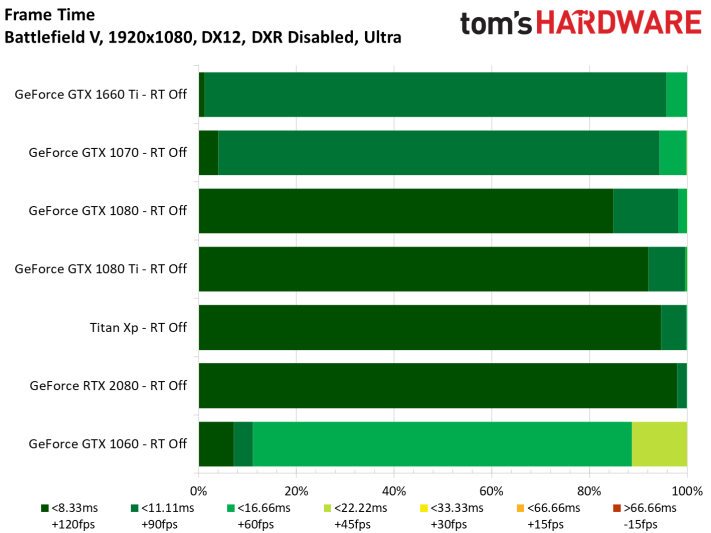

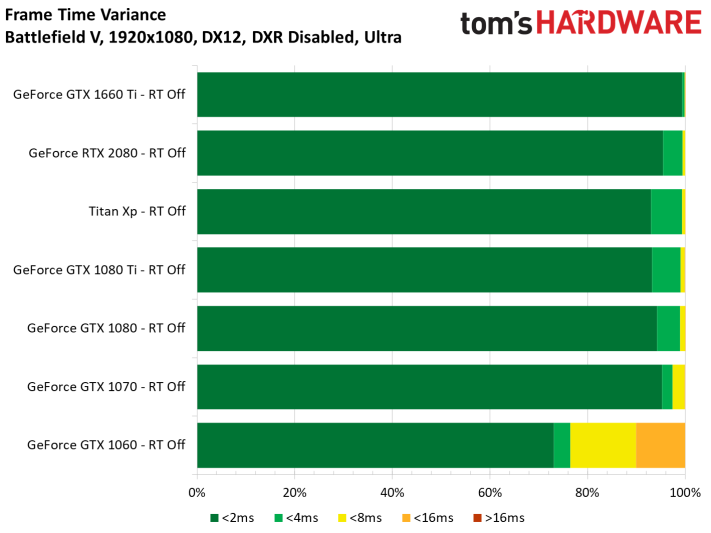
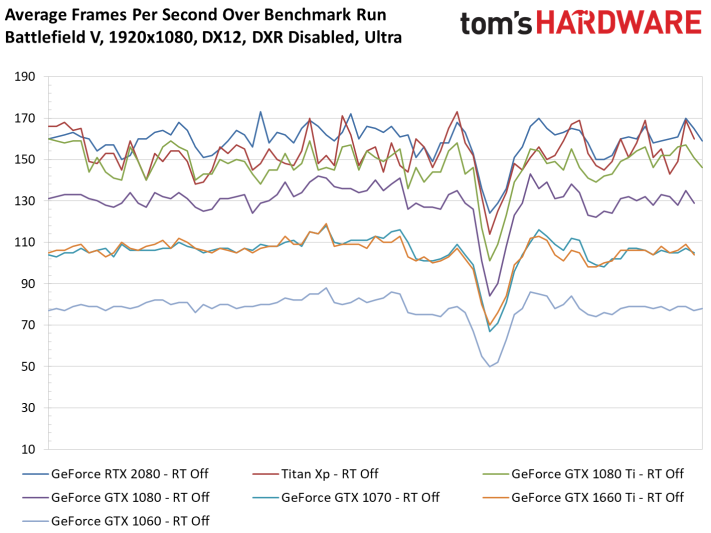

GeForce RTX 2080 is fastest of course, landing just ahead of Titan Xp and GeForce GTX 1080 Ti through our 80-second benchmark.
Take note that GeForce GTX 1660 Ti is just as fast as GeForce GTX 1070, both averaging more than 100 FPS at 1920x1080.

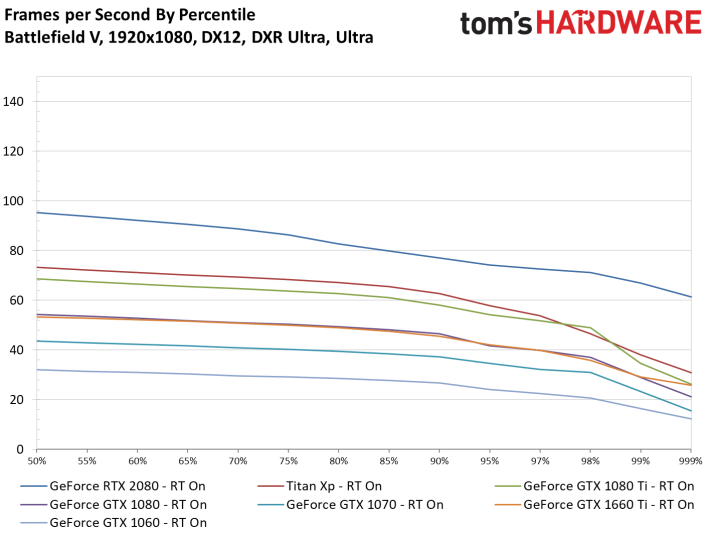

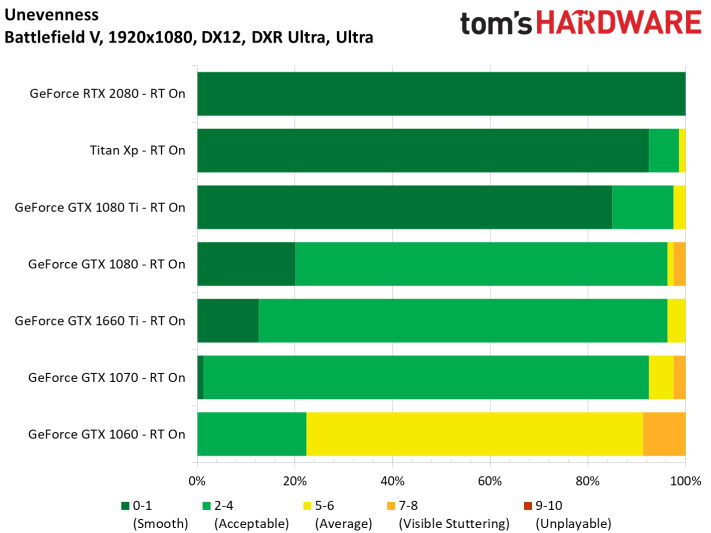
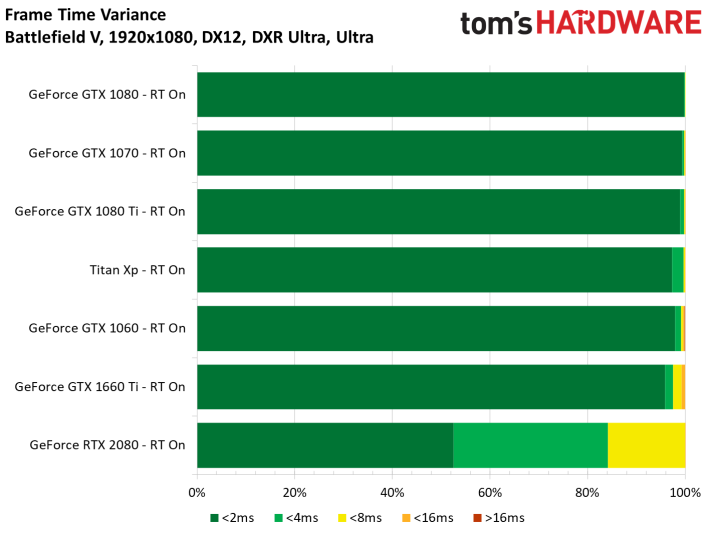

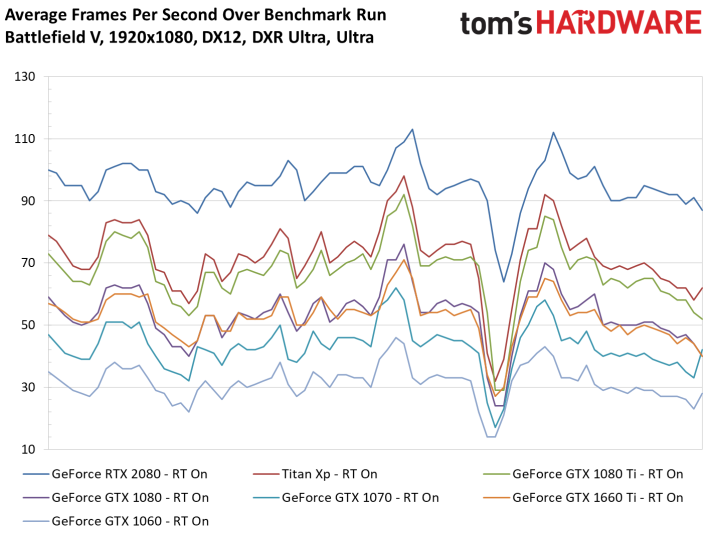
With DXR enabled (and set to Ultra, corresponding to the preset), GeForce RTX 2080’s lead grows substantially.
Titan Xp and GeForce GTX 1080 Ti are still playable, though their 99th percentile frame rates are significantly lower than they were with ray tracing disabled. This is caused by one specific sequence where three fuel cans explode on wet ground, causing bright reflections on the water and the player’s gun. GeForce RTX 2080 slows down a bit through that scene, while everything else gets hammered. Moral of the story: so long as the ray tracing workload is modest, Pascal-based GPUs can keep up.
Dividing the ray-traced frame rate by the baseline with DXR disabled makes it possible to compare each GPU using another metric: the percentage of average performance remaining after turning ray tracing on.
As we’d expect, the graphics card with dedicated RT cores takes the smallest hit (though it’s still a substantial ~40%).
It’s more surprising to see baby Turing—GeForce GTX 1660 Ti—hold on to half of its performance. That card’s TU116 processor doesn’t have any RT cores to accelerate ray-traced reflections, so its principal advantage comes from the SM’s concurrent execution of INT and FP instructions, along with a reorganized cache hierarchy, which Pascal lacks.
The Pascal-based line-up falls in line according to shading horsepower, though the scaling tapers off below GeForce GTX 1080.
Worried that 1920x1080 wouldn’t do enough to tax the higher-end cards in our comparison, we pitted GeForce RTX 2080 against Titan Xp at 2560x1440, too.
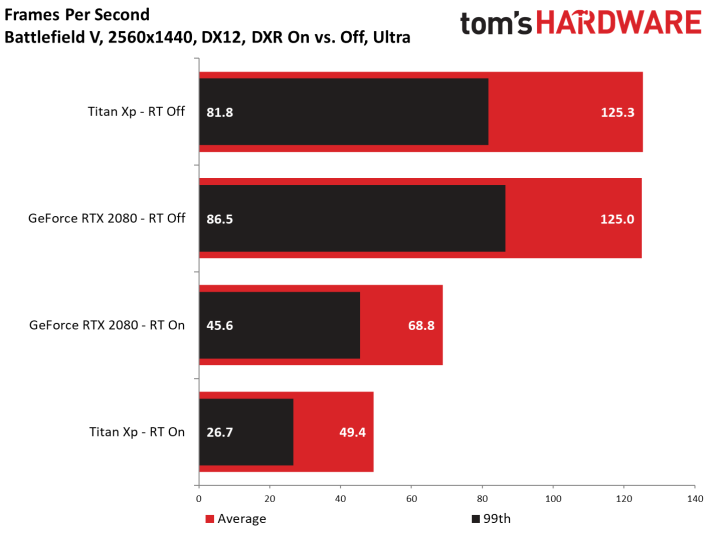
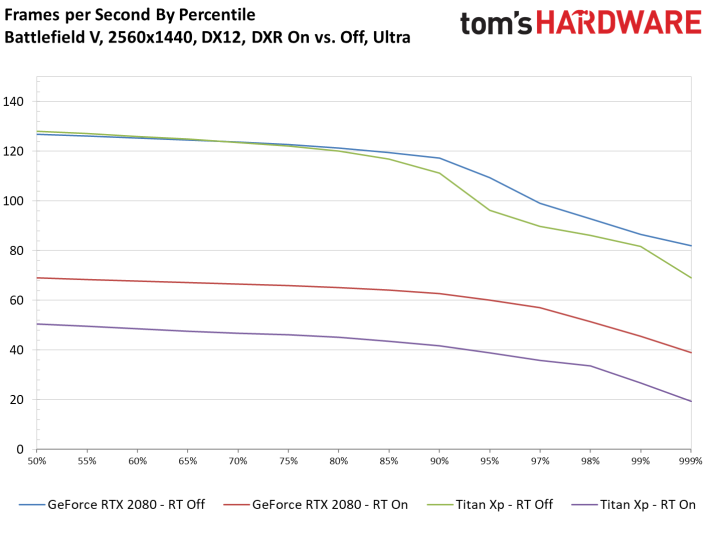
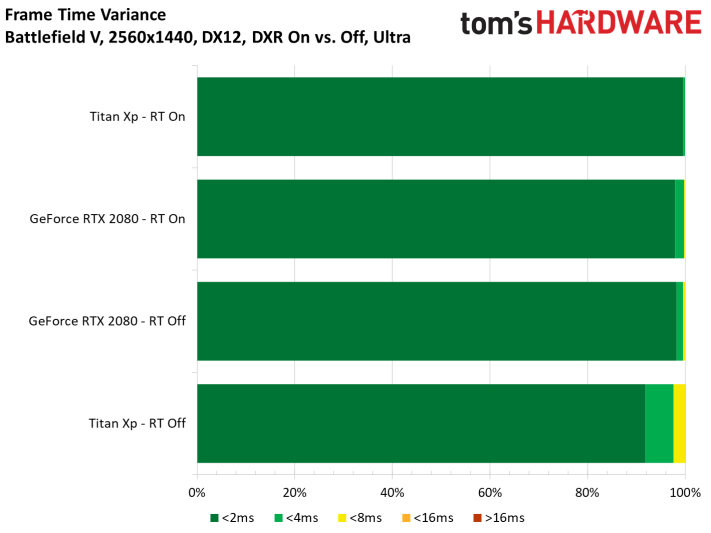

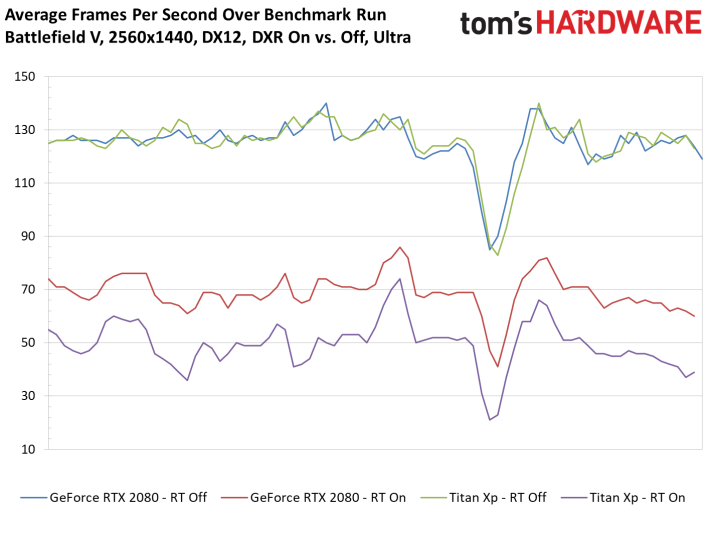

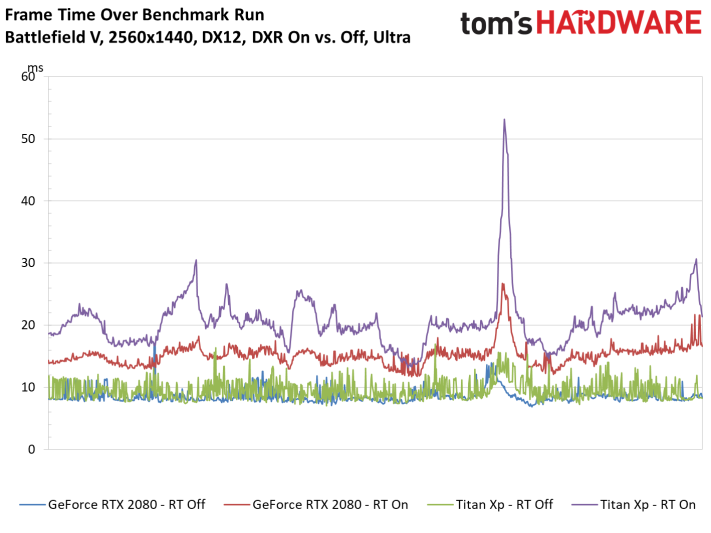
Whereas the RTX 2080 was a bit faster than Titan Xp at 1920x1080, the two cards are equivalent at 2560x1440 with DXR turned off. Nvidia’s GeForce RTX 2080 does offer a slightly smoother experience than the Titan through our benchmark, though.
With ray-traced reflections set to Ultra, the Turing-based GeForce maintains 55% of its original performance (versus 60% at 1920x1080). The Pascal-based Titan Xp musters less than 40% of its rasterized frame rate. That’s down from the 47% we saw at 1920x1080.
Though still technically playable, the Titan Xp struggles to keep up with lots of reflections on-screen. In comparison, the GeForce RTX 2080’s worst frame time spike is less than half as severe.
MORE: Best Graphics Cards
MORE: Desktop GPU Performance Hierarchy Table
MORE: Here's How Battlefield V Performs with Ray Tracing
Current page: Battlefield V: Ray-Traced Reflections
Next Page Shadow of the Tomb Raider: Ray-Traced Shadows-
Jsimenhoff This is a great article Chris. Looks like Ray Tracing is a bit to much to process for my Nvidia 1080 GTX!Reply -
Druidsmark ReplyAnimeMania said:Does this only pertain to Windows 10 or will this also work on Windows 7.
Raytracing as a far as I understand it requires DirectX 12 which requires Windows 10. As far as I know only Blizzard's game World of Warcraft supports DirectX 12 on Windows 7. -
cryoburner It will be interesting to see how well AMD's existing cards handle DXR Raytracing. It seems like their better compute performance could potentially give them an advantage over similarly-positioned Pascal cards. That still might not be enough for playable performance though.Reply -
DotNetMaster777 Chris very nice article and very good performance graph for frames per second!Reply -
bit_user Reply
Excellent analysis. I really appreciate the amount of effort that must've gone into this!cangelini said:Ray Tracing On Nvidia’s Pascal Architecture, Benchmarked : Read more

